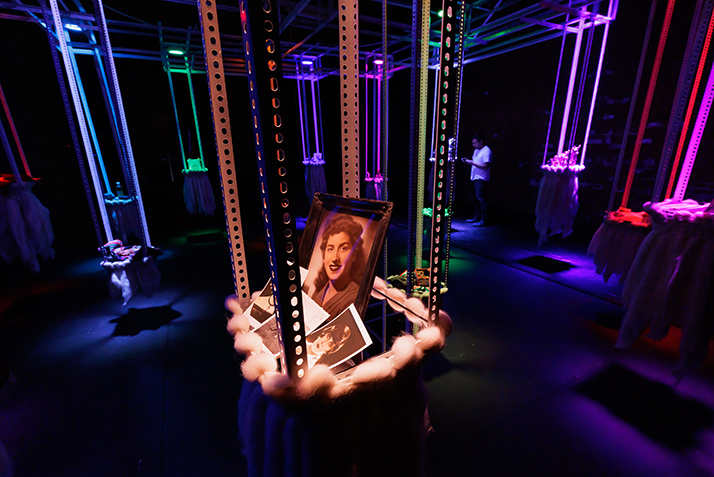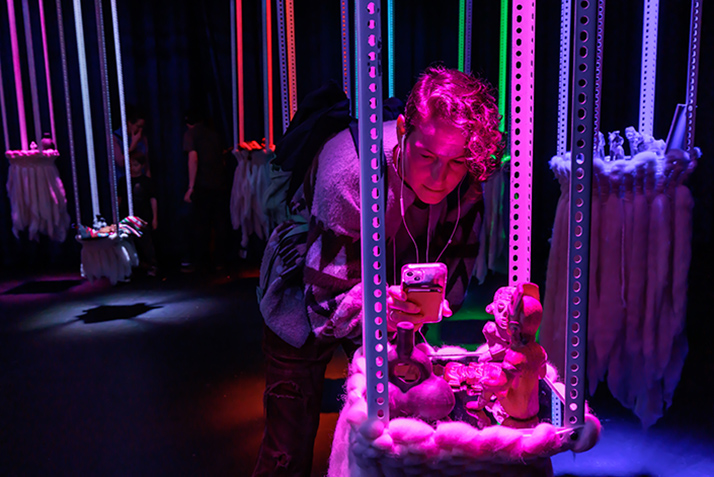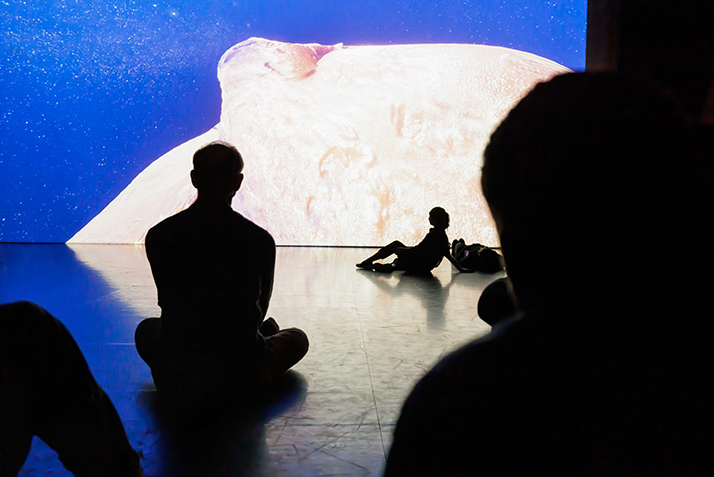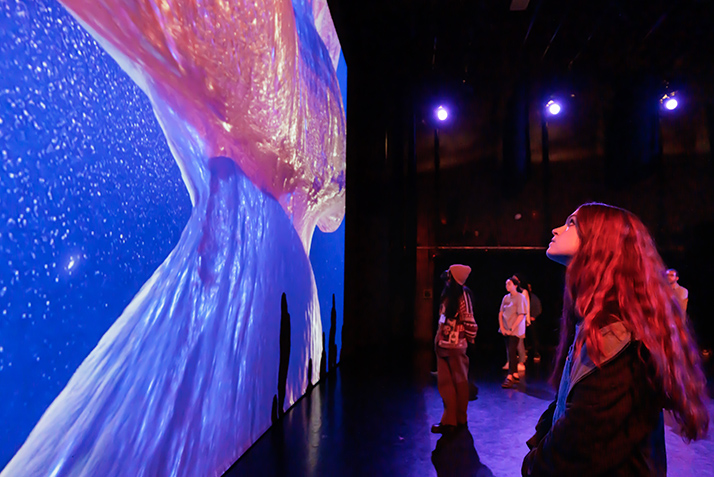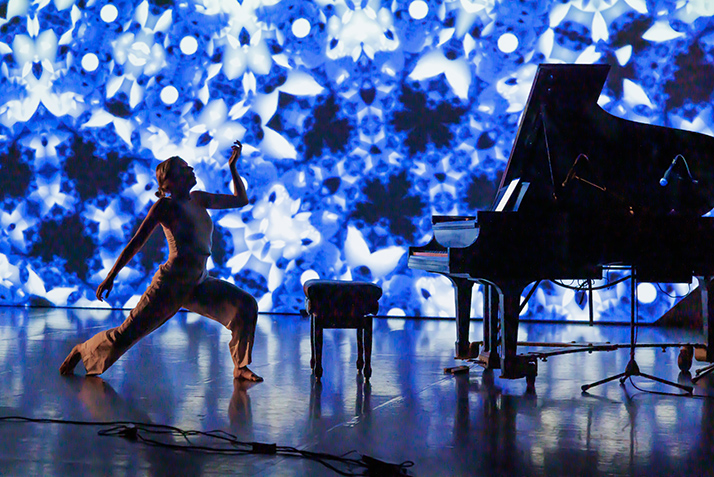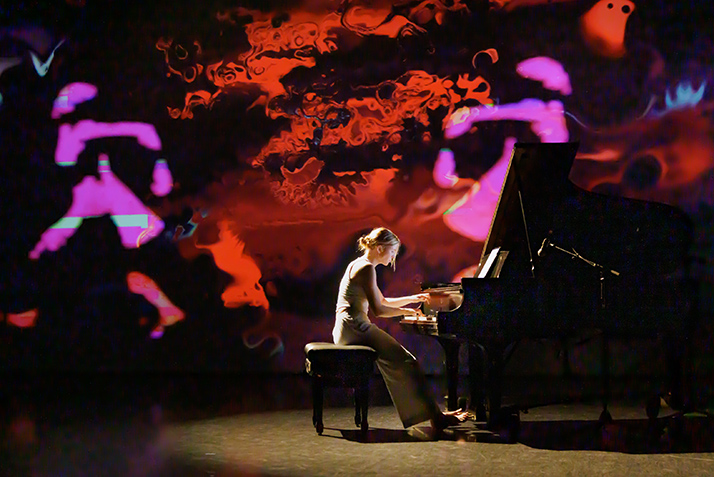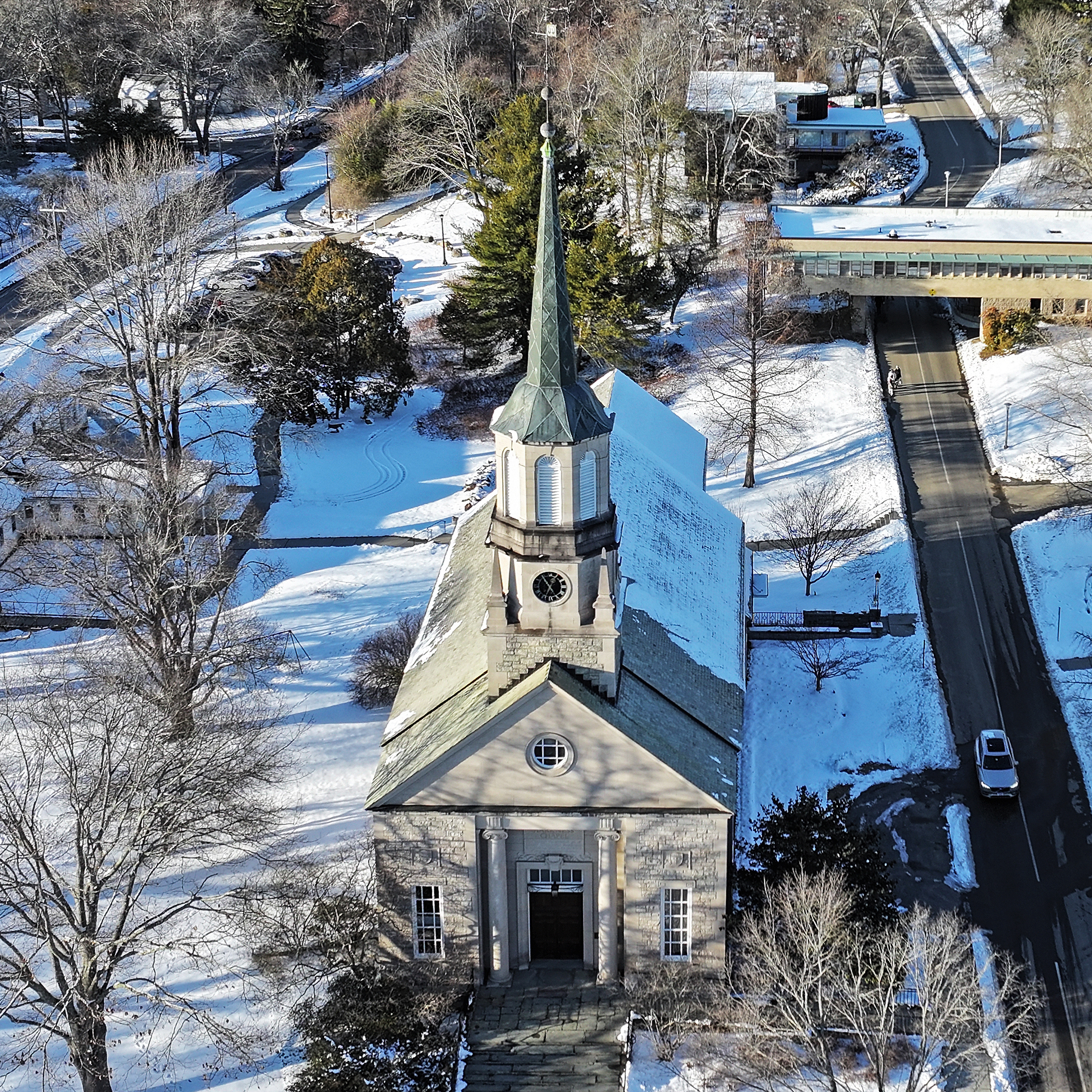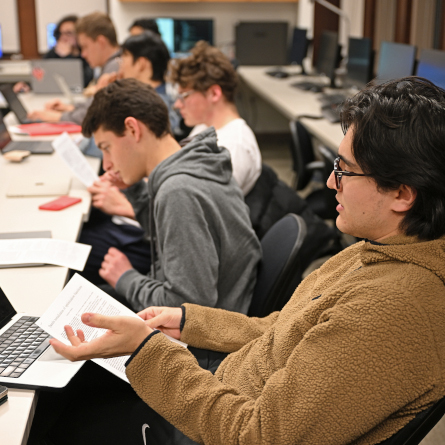
Arts and tech collide at CONTACT: The Ammerman Center Symposium

Thought-provoking, visually stunning and fully immersive works challenging the limit of art and technology were on display across the Connecticut College campus during CONTACT: The 17th Ammerman Center Biennial Symposium on Arts and Technology Nov. 10-12.
The Symposium featured dozens of performances, installations, workshops and exhibitions by artists, technologists and scholars from New London to Hong Kong. Their innovative work addressed topics ranging from climate change to space exploration, social protest to communal healing rituals, and sustainable food systems to material culture.
“This was the first full Symposium we’ve hosted since 2018, and the excitement and energy were palpable.” said Nadav Assor, the Judith Ammerman ’60 Director of the Ammerman Center for Arts and Technology and associate professor of art at Connecticut College. “We’re thrilled we were able to bring such a world-class collection of artists, performers, teachers, thinkers and makers to our campus.”
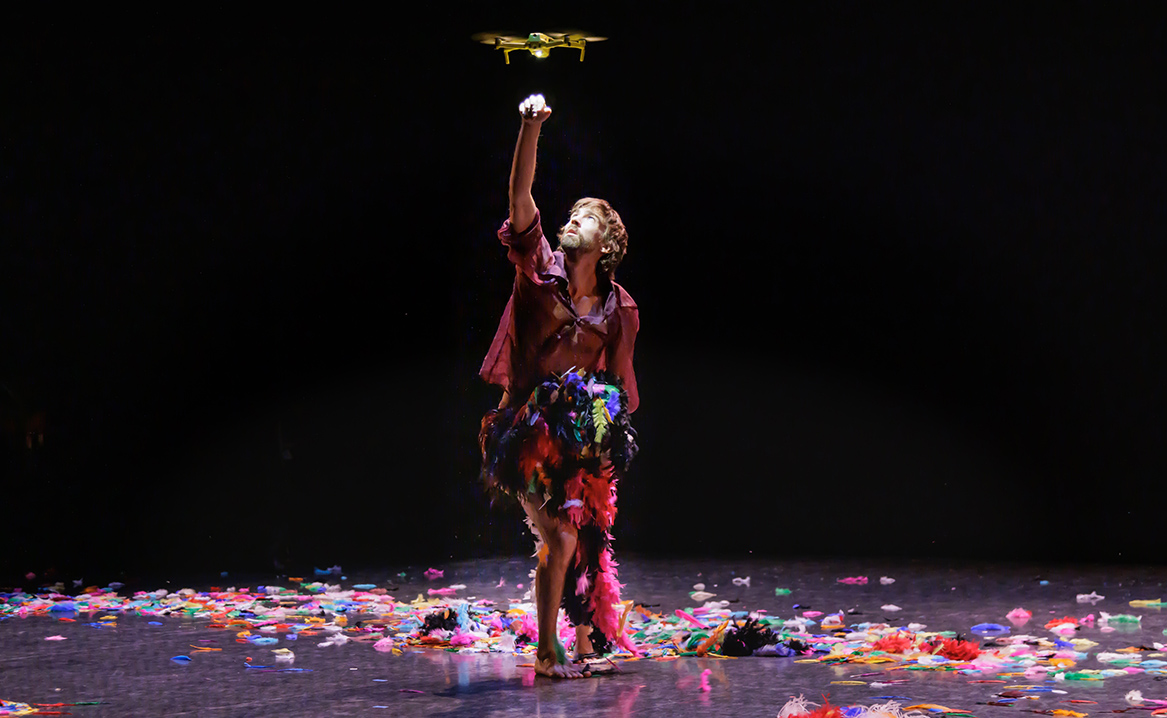
The theme of the event, CONTACT, reflected the impact of a global pandemic that challenged perspectives on what it means to engage, touch and come together.
“Contact is touch and affect; it is a means of forming communities and collaborations; it is a vehicle for contagion; it is a place, an action and an interface,” said the event organizers. “In the contemporary vocabulary, ‘contact’ is something to be avoided in physical interactions or something perhaps just out of reach in our remote relationships with others. Contact also contains the promise of new and continued engagement within communities, among disparate institutions and so-called disciplines.”
In the spirit of contact and collaboration, the Symposium featured four commissioned artists—Centre for Emotional Materiality, Anonymous Ensemble, Ensemble Pamplemousse and Joel Ong—who spent the week leading up to the event building and finalizing their pieces, meeting with students and members of the local communities, hosting workshops, and guest teaching classes.
Members of the Centre for Emotional Materiality hosted a keynote performance, guiding participants in an intellectual, somatic and emotional “waltz” to explore how to move from FOMO (fear of missing out) to LOMO (love of missing out). Anonymous Ensemble presented “Llontop,” an installation and poetic theatrical performance that centers Quechua voices and employs cutting-edge machine learning to activate objects with content specific to each audience member; Ensemble Pamplemousse performed “Envelop In In,” a composition that explodes the various implications of “shadow” using musical tools, orchestration and computer self-determination; and Ong showed “In Silence,” a sculptural sound installation using water and bone conduction to convey stories of migration and the Caribbean diaspora of Toronto to pay tribute to the emotional turmoil through the pandemic.
“Our students had an amazing opportunity in this year’s Symposium and they really ran with it,” said Steve Luber, associate director of the Ammerman Center. “In addition to researching and discussing in advance many of the artists, scholars and practitioners that were coming to campus, the students jumped in and helped with everything from ushering to setting up in the gallery to working alongside our commissioned artists.
“The understanding of arts and tech not only as the presentation, but the process, is so vital, and the students really saw what it means to put in the work and commitment required in such a field.”
Giorgi Chikvaidze ’24, a psychology major and Ammerman Center scholar, had the opportunity to work all week with Anonymous Ensemble in the Athey Center for Performance and Research at Palmer Auditorium.
“It surprised me how easy it was to bond and communicate with commissioned artists. Not only were they great artists, they were humble, sweet, simply wonderful people. They were excited to hear our thoughts, and all of them were more than glad to chat with us about our own projects and give advice,” Chikvaidze said.
“It meant the world to me to be able to do all these things. Working in a professional environment with commissioned artists, I was troubleshooting their problems, exchanging information and simply growing day by day. Events like the Ammerman Symposium are crucial for networking and have a profound impact on the college experience.”
The CONTACT Exhibition, organized by commissioned curator René Cepeda, will be on display in the Cummings Arts Center galleries through Dec. 10. Highlights include Ong’s “In Silence;” Katerie Gladdys’ “Seed Cabinet,” a piece that resembles scientific discourse to invite the audience to dig deeper reflecting upon their role in global and local food systems; and Peter Burr’s “Dirtscraper,” which simulates an underground structure whose ‘smart architecture’ is overseen by artificial intelligences. The exhibition is free and open to the public.
